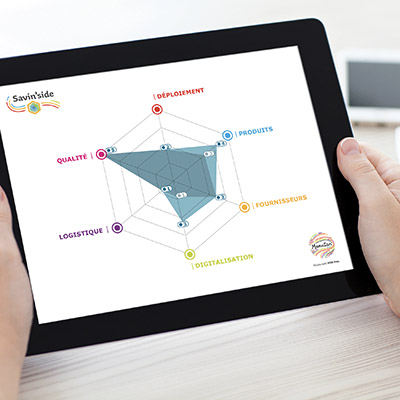Inflation inevitably impacts business activities. It drives up purchasing and production costs, increasing the risk of supply chain disruptions. To protect themselves and maintain profitability, companies need to monitor the market closely. They can rely on a key indicator: Core inflation. This price index is unique in that it excludes highly volatile prices such as fresh food and energy, and regulated prices, allowing for a clearer view of long-term price trends.
What is core inflation?
Among various measures of price changes is an indicator highly regarded by central banks and economists: Core inflation. This index excludes prices influenced by government intervention (such as electricity, gas, tobacco) and items with volatile prices (fresh products, meat, dairy, flowers, plants, oil-based products) which are subject to fluctuations due to weather and market pressures. Core inflation is calculated as the year-on-year change in the underlying price indices, excluding volatile and regulated prices mentioned above.
Thus, core inflation is a seasonally adjusted index unaffected by government policies, providing an underlying trend in price evolution within a country or even across a region. Economist Philippe Martin explains: “The concept of core inflation aims to assess structural pressures on prices, driven by demand dynamics, value chain tensions, or the price-wage loop, excluding the most volatile goods and services.”
Core inflation is closely monitored because it’s considered more representative than headline inflation. In fact, its trajectory guides the European Central Bank’s (ECB) monetary policy. ECB President Christine Lagarde adds: “Core inflation refers to the slow-moving part of inflation that, once temporary shocks have faded, will persist over the medium term.”
Economists and analysts rely on national statistics and figures to better understand inflation’s impact on the economy, especially when considering core inflation as part of broader consumer price index (CPI) measures. It’s particularly useful for tracking inflation rates and providing insights into overall economic growth and GDP (Gross Domestic Product) changes. Additionally, tools like CPI can give procurement teams a more reliable basis for forecasting potential cost impacts in their sector.
Inflation: Which levers should procurement departments use?
In an inflationary context, procurement departments face an imperative: Control costs while ensuring the quality and continuity of supplies. Fortunately, there are best practices available to buyers to mitigate inflation’s impact.
Anticipating market trends
To counter price inflation, it is essential to anticipate market developments and future needs. Buyers can track core inflation for an overall trend but should also monitor price trends by category, scarcity risks, supplier constraints, and even market opportunities.
By understanding statistics like the inflation rate and average price movements, buyers can better prepare and forecast potential impacts on procurement. Keeping a close eye on consumer price indicators and sector-specific inflation rates enables them to make data-driven decisions.
This way, they can identify the most at-risk areas and implement appropriate strategies in advance: Long-term contracts, buffer stocks, exploring alternatives. This requires predictive tracking and analysis tools to scan external data.
Negotiating with suppliers
Managing inflation also requires opening discussions with suppliers to understand their situation and intentions while seeking favourable terms, discounts, or price guarantees. Suppliers may attempt to pass rising costs onto clients.
Alexandre Billard, procurement director at Lumibird, shares: “Relations are strained today as, in many cases, the price increases demanded, or even imposed, by some suppliers – allegedly due to material cost hikes or shortages – are now unfounded.” Ensuring the legitimacy of this approach and finding joint solutions is essential.
It’s important to understand supplier cost structures and refer to market indices. Once again, core inflation provides a general trend, which should be complemented by specific indices for raw materials, energy, and labour. This allows buyers to compare supplier price trends with market rates and adjust any discrepancies.
Diversifying supply sources
To manage inflation effects, companies benefit from diversifying their supply sources, known as dual or multiple sourcing. This reduces supplier-related risks, such as economic dependency, supply disruption, delays, or contract breaches.
This involves seeking new suppliers who are competitive, reliable, and of high quality, requiring constant market monitoring to identify suitable partners whose products or services can replace current offerings. Despite price pressures, focusing solely on cost is unwise; partners should be evaluated based on relevant criteria like flexibility, sustainability, innovation, etc.
Optimising processes
Finally, procurement departments can also work to optimise their processes. By rationalising, automating, and simplifying their processes, they can reduce indirect costs.
Levers available to buyers include rationalising the supplier portfolio, consolidating purchases to reduce supplier management costs and transaction costs, achieving economies of scale, and negotiating volume-based prices. Another effective lever is the digitisation of transactions through e-procurement solutions, enabling up to 80% savings per transaction, along with a clear view of spending and an environmentally friendly approach.
In summary, core inflation is a stable and coherent measure of price variations, less affected by external phenomena. By excluding volatile components, it provides a clear view of medium-term economic trends, helping companies understand inflationary trends and make informed decisions. This enables procurement teams to control costs, reduce risks, and maintain strong supplier relationships.









